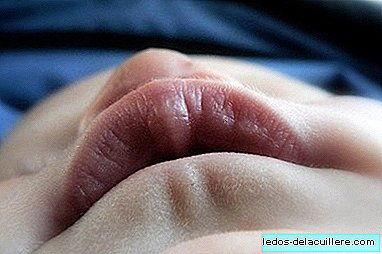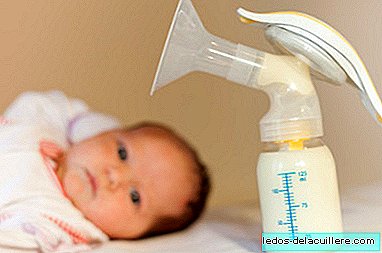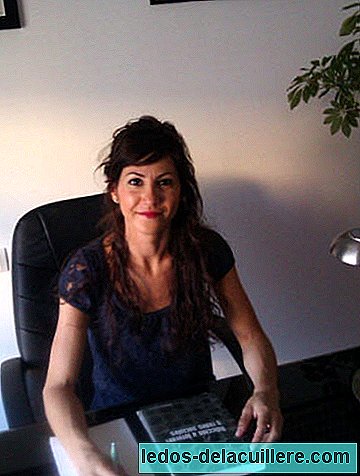
After seeing the other day a small introduction about the dysglossias in which we talked about its causes and its diagnosis, today we will talk about the different types of dysglossias That we can meet.
Recall that dysglossia is a disorder of the joint, without problems at the level of the Central Nervous System, caused by physical injuries or malformations of the organs of articulation of speech.
The causes of dysglossia can be several, affecting different organs of speech and presenting themselves in a unique or associated way. Taking into account the affected organ, different types of dysglossias are distinguished.
Lip dysglossias
Are those in which the articulatory difficulty is caused by a alteration in the shape, strength or consistency of the lips. Among the most frequent causes we can find:
- Harelip: It is a congenital malformation of varying degrees of severity; It can range from simple depression of the upper lip to its total cleft, which is usually accompanied by cleft palate and cleft of the alveoli. The malformation can occur on one or both sides of the lip, being the most severe manifestation of a cleft lip, the so-called middle or central cleft lip. As a consequence, the child's speech will be affected both in the articulation of some vowels (/ u /, / o /) and in those consonants in which the lips intervene (/ b /, / p /, / m /).
- Hypertrophic upper lip frenulum: It is a malformation that hinders the normal mobility of the upper lip, producing a space between the two central incisors. As a consequence, there will be difficulties in articulating the sounds / m /, / p /, / b /, / u /. Usually, only a labial frenulum is considered pathological if there is a delay or impossibility of canine eruption, and that may be because of the frenulum.
- Lower lip fissure: It is usually accompanied most of the time with cleft lip, although it can also be given in isolation.
- Facial paralysis: in children it is caused by different causes (obstetric trauma from the use of forceps, suppurative conditions of the middle ear, diseases such as polio or diphtheria ...). The paralysis can affect one (in which case the alteration is not very noticeable) or on both sides of the face (here the articulation of the phonemes / p /, / b /, / m /, / or / ... is affected).
- Macrostomy: The lengthening of the buccal cleft is usually associated with malformations of the ear, although sometimes the jaw and eyes can also be affected. It usually begins at the angle of the mouth and may extend along the face but without little extension. In this case the mouth appears large, with a wide and prominent lower lip (incomplete macrostomy). On the other hand, the fissure can be extended much longer (complete macrostomy). It is usually accompanied by atrophy of the lower jaw or ear abnormalities.
- Lip wounds: Rarely, injuries to the lips are responsible for speech problems, so it will be necessary to check first if the articulatory problems are really the cause of the injury or if it is a functional dyslalia.
- Trigeminal Neuralgia: The trigeminal nerve is responsible for the sensitivity of the face. When there is involvement of this nerve we appreciate a sudden pain, very intense and short-lived.
Mandibular dysglossias
They are disorders in the articulation of the phonemes by a alteration in the form of one or several jaws. The origin can be congenital, developmental, surgical or traumatic.
- Removal of the upper / lower jaw: due to tumors, accidents ...
- Mandibular atresia: abnormality due to an arrest in the development of the lower jaw of congenital or acquired origin (for example, sucking of the finger or excessive use of pacifier). As a consequence, there is a bad occlusion of the jaws and an abnormal tooth position. It may happen that, due to the disproportion of the dimensions between the tongue and the mouth, due to mandibular atresia, respiratory disturbances occur.
- Maxillofacial Dysostosis: It is a particular form of mandibular malformation associated with other abnormalities.
- Progeny: an exaggerated growth of the lower jaw, resulting in poor closure of the jaws.
Dental dysglossias
They are joint disorders as a result of a alteration in the shape or position of the teeth. The causes are several, and among them we find family inheritance, hormonal imbalances, food, orthodontics, prostheses ... In these cases, if some type of intervention is performed by the orthodontist and dental technician, it is advisable to follow up to prevent Possible joint disorders.
Lingual dysglossias
The tongue is the active organ of the articulation of sounds, and requires an extraordinary synchronicity of its movements during speech; therefore, lingual accuracy may be altered because:
- Short bridle: also called hookworm. The biggest problem it causes is with the sounds / d /, / l /, / n /, / R /, since it prevents the tongue from rising.
- Glossectomy: that is, the total or partial removal of the tongue by surgical intervention.
- Macroglossia: is a excessive increase in tongue size, generating a decrease in lingual movements.
- Congenital malformations of the tongue
- Uni / bilateral paralysis: paralysis of the hypoglossal nerve (responsible for innervation of the tongue) with little discomfort when it is unilateral and with trouble speaking and chewing when it is bilateral.
Palatal dysglosias
They are alterations in the articulation of sounds by organic malformations of the palate and veil of the palate.
- Cleft palate: congenital malformation in which the two lateral halves of the palate do not join in the midline. The fissure can affect the palate veil, hard palate or upper jaw. It is usually associated with cleft lip. They may be due to hereditary causes or external causes (radiation, virus, lack of vitamins A and B ...). Among the most frequent articular disorders are glottis (a small noise when making some sounds such as / p /, / t / o / k /), pharyngeal snoring, air leakage through the nose and nasal speech.
- Submucosal fissure of the palate: It is a congenital malformation in which the hard palate has not joined the midline but the mucosa that covers it, causing the palate to shorten .
- Ogival Palate: if it is true that the palate in the form of an ogive favors the difficulty of issuing phonemes (/ t /, / d /, / l /), but there are also numerous children with this organic pathology that have not generated any problem articulatory Therefore, if we find articulatory difficulties that coincide with the ogival palate, it should be assessed whether it is more a functional dyslalia or a true dysglosia.
- Other causes: short palate, bifida uvula, long palate veil, perforations ...
In addition to these causes of dysglossia, it is important to take into account another series of factors, such as intellectual deficiency, socio-cultural deprivation or auditory deficit, which although they are not directly related to dysglossias, they do disfavor the pathological condition, intervening negatively in the intervention.
Soon we will tell you how the assessment and treatment of dysglossias is performed. Until then, do not forget that you can make your queries in our section of Babies and more Answers.












